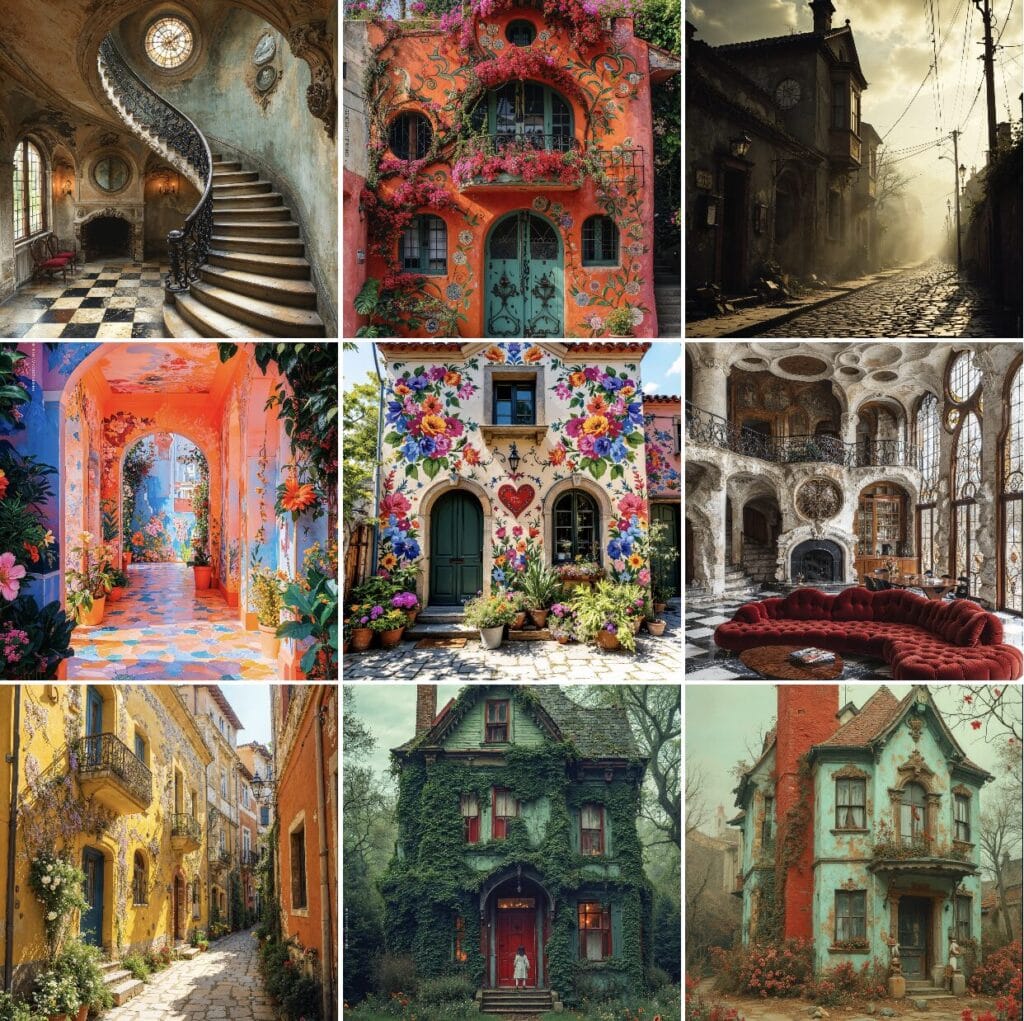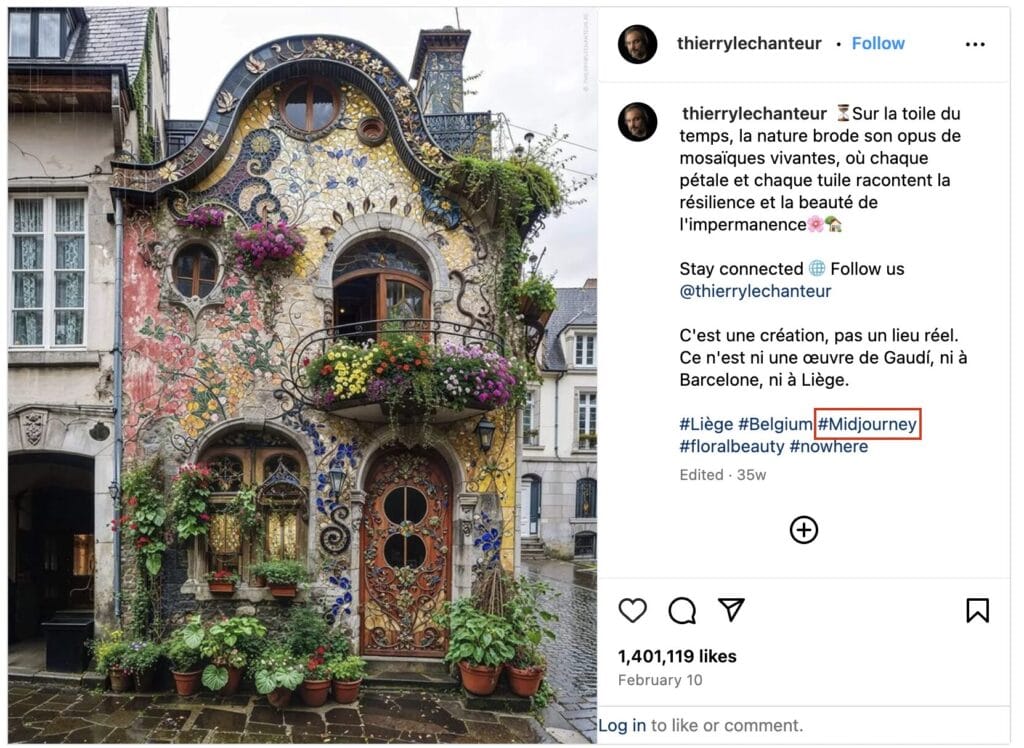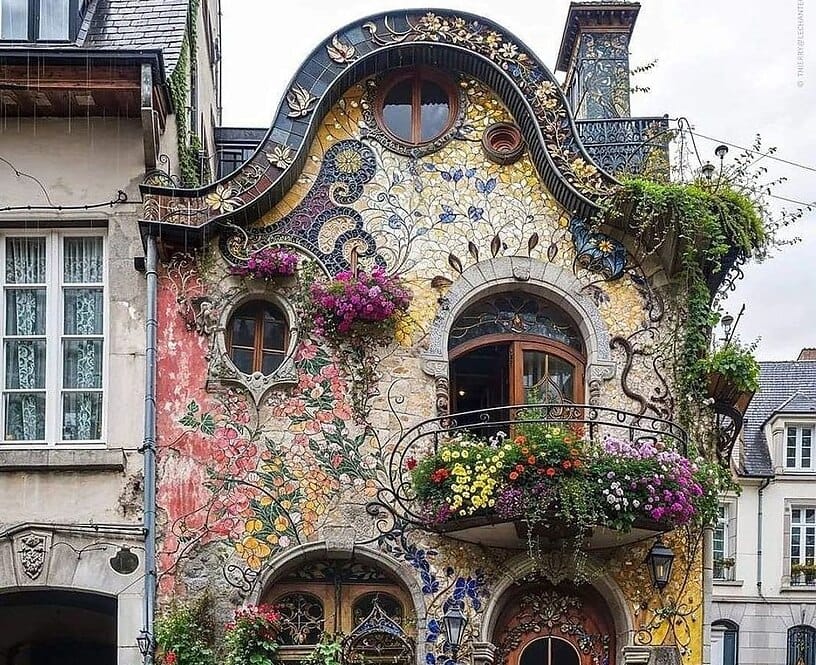An image of an unusual house has gone viral on the Internet, located, judging by the captions to the photo, in the Belgian city of Liege. We decided to check if a similar building exists.
A photograph of a “wonderfully preserved medieval house in the Belgian city of Liege” can be found on portals for storage photos and entertainment websites. Social network users (“VKontakte", Instagram*, Threads*) actively share it on their pages. Photos are especially popular in Facebook*, where are these publications are recruiting thousands likes and reposts.
The first thing that casts doubt on the authenticity of the photo is that it is distributed in only one version. “Verified” could not find any pictures of the building from other angles or at other times of the year. Also, none of the posts provide the address of the house, only an indication that it is located in Liege.
Earliest publication The image, found using a reverse image search on Google Images, was taken on February 10, 2024, on Thierry Lechanteur's Instagram. His authorship is also evidenced by the signature located in the upper right corner. Lechanteur is a Belgian avant-garde artist who, as stated on his website, explores the boundary between traditional photography and artificial intelligence." The site has a whole chapter, dedicated to real photographs of Liege, the artist’s hometown, but they all do not look as fabulous as in the viral image. But his account on Instagram is almost entirely dedicated to images of unusual architecture created using neural networks.

The post with the viral photo indicates that this is the creation of the account owner, and not a real place located somewhere in Barcelona or Liege. The author of the post also noted that the image has nothing to do with the Spanish architect Antonio Gaudi. Its buildings have a whimsical and fantastic style, similar to the building in the viral photo, and this could evoke corresponding associations among users. Despite the fact that the post actually contains the tags #Liège and #Belgium, it also contains the tag #Midjourney - the neural network with which, apparently, this picture was created.

As for the “medievalness” of the building, this too raises questions. “Verified” turned to architectural historian and art critic Sergei Kavtaradze and asked whether something similar could have been built in the Middle Ages?
“We must admit that the AI created a fairly convincing picture. In principle, if it were positioned as the creation of a modern follower Friedensreich Hundertwasser, that is, like a professional game in vernacular architecture, suspicions, perhaps, would not arise among the majority.
Also, the image is to a certain extent close to the experiments of Art Nouveau, including Antonio Gaudi. Actually, stained glass lunette above the balcony is clearly borrowed from some real work, and the lines of ceramic panels on the facade are intended to be associated with Casa Batlló great Catalan.
Least of all, the resulting image can be attributed to the Middle Ages, and the main argument here is that the history of architecture does not seem to know any real prototypes of this type, except perhaps in fantasy films. Here, for example, no half-timbered, characteristic of medieval European buildings and well known to us from illustrations to fairy tales. Moreover, if you look closely, the arched openings are clearly framed by late decor, something from the arsenal of neo-Renaissance or neo-mannerism.”
Sergei Kavtaradze draws attention to the outline of the roof, which rather resembles fragments of reed roofs of rural buildings. Also, according to the architectural historian, the glazing and stained glass windows of the lower window were borrowed from examples of the last third of the 19th century, and the keel-shaped casing on the right sash owes its appearance to jewelry. It turns out that the medieval house could not have been built in the specified period: the architectural historian sees in it a combination of decorative elements borrowed from the art of the 19th and 20th centuries.
This is not the first time that Internet users have taken the creations of neural networks at face value and distributed them as photos of real-life buildings and/or objects. Thus, “Verified” has previously refuted the veracity of the image of futuristic underground floors Sydney Opera House and the appearance of amazing bright pink dolphins, not to mention the numerous generated photo real people - politicians, actors, public opinion leaders.
Thus, the image of a “wonderfully preserved medieval house” turned out to be just one of the creations of artificial intelligence, which are increasingly becoming viral and distributed by Internet users as real photos. However, even if the building really existed, it could hardly have been built in the Middle Ages, as indicated in most of the posts accompanying the photo.
*Russian authorities consider the company Meta Platforms Inc., which owns the social networks Facebook, Instagram and Threads, to be an extremist organization and its activities in Russia are prohibited.
Cover photo: Instagram thierrylechanteur
Read on the topic:
- Architectural Digest. 12 of the Strangest Buildings in the World
- UNESCO World Heritage Centre. Works of Antoni Gaudí
- Putin on his knee, the Pope's down jacket and Trump's arrest: how to recognize viral photos created by neural networks
If you find a spelling or grammatical error, please let us know by highlighting the error text and clicking Ctrl+Enter.






